Fars Carpet | A mixture of imagination and color
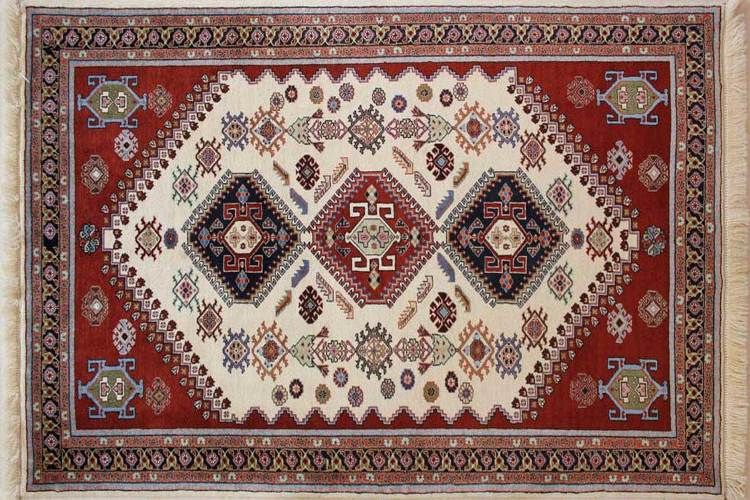
Hand woven carpet in Iran which is famous among different groups in Iran and out of it.
Carpet is a creation from imagination which is made from pattern and knit in form of warp and weft by hands of Iranian.
Fars is a vast land and has a long history in Iran. Hand woven rugs and carpets are an important symbol of this area is known by the title of Fars rug or Fars carpet.
The history of Fars carpet
Carpet weaving in this province dates back to more than twelve centuries. Historians point to the presence of carpets in Cyrus’ tomb during Alexander’s invasion to Iran.
Before residing of Qashqais trib, Persians were living in this area and they were familiar with the art of carpet weaving. Archaeological findings emphasize the antiquity of carpet weaving culture in this region.
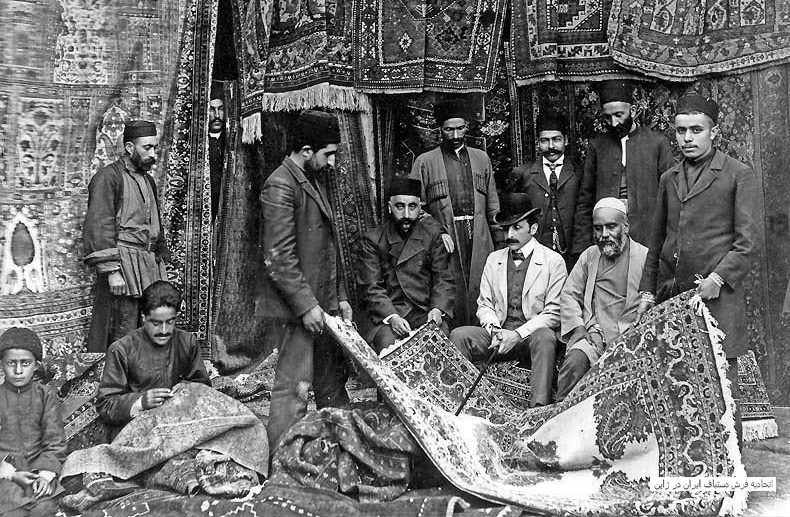
the history of carpet weaving in Iran is very long and exact date of it is not known.
The eighth century AH was the peak of Fars carpet weaving. The fame of Fars carpet in this period was so great that Ghazan Khan asked Fars artists to weave Fars carpets for his palace.
In the ninth and tenth centuries AH, with presence of more Qashqais, Khamseh tribes and other tribes in this province, carpet weaving flourished in this region. This art continued until present and became one of the main features of this region.
Features of Fars carpet
The lifestyle of nomad in Fars region has a direct impact on using of elements of nature. People in this area created beauties and these beauties emerged to the Fars carpets gradually.
Regarding the Persian carpet, along with the most famous examples of it, which are the Qashqai and Khamseh carpets, we can also mention the weavings of the surrounding villages in this province.
In addition to the numerous varieties of designs and styles that exist in these types of rugs and carpets, there are also commonalities, such as the existence of geometric designs or the use of cheerful colors that are inspired by the nature of this region. The most important common denominator among all types of Fars handicrafts is the loose texture of the knots and their light weight, and of course, the dominance of geometric designs can be seen at first glance.
Due to the high volume of Fars carpets woven by nomadic women in this region, the loom carpet used for it are different. For example, unlike many areas, the loom carpet in this area is mostly on ground and horizontal so that it can be easily moved during migration.
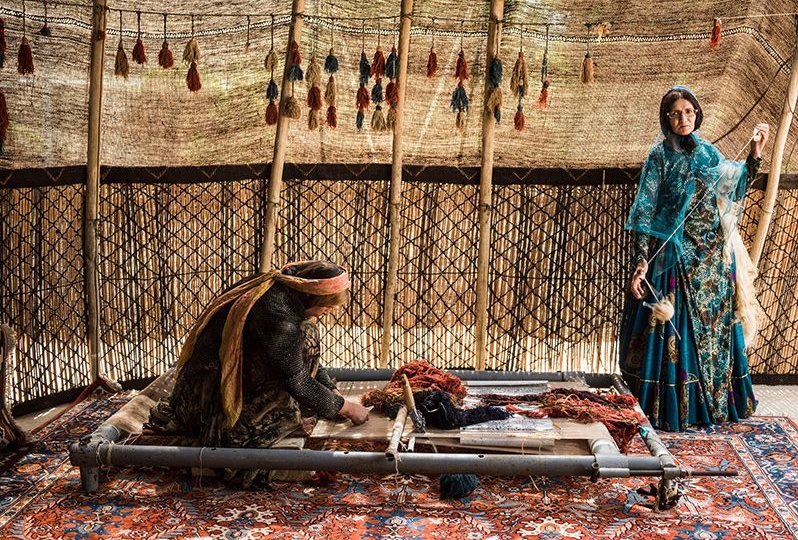
one feature of Fars carpets is horizontal loom.
Fars carpets usually have a mental design and are woven in pairs or with a rug. The first carpet is called the “order” carpet, and the carpet or rug is woven with the order rug with the help of its design or mentally and inspired by the order carpet design.
The pattern and design of Fars Carpet
The pattern of Fars carpet is divided into two categories:
Traditional patterns
Regular patterns
Traditional motifs or patterns are often woven mentally and have a geometric structure. The most important feature of this type of Fars carpets is symmetry weaving. Fars Carpets are woven symmetrically with traditional motifs from their horizontal or vertical halves.

using patterns inspired by nature in carpet weaving is a feature of this art.
The regular patterns of Fars carpet are divided into six categories. Regular motifs, Muharramat, sprays, tangled fish, Buteh, paisley and plant motifs.
Most Qashqai hand woven includes one or three bergamots in the middle and one bergamot in each corner. In the texture of the patterns of regular carpets, various designs are used, such as: octagonal, octagonal flowers, geometric shapes, animal images, etc.
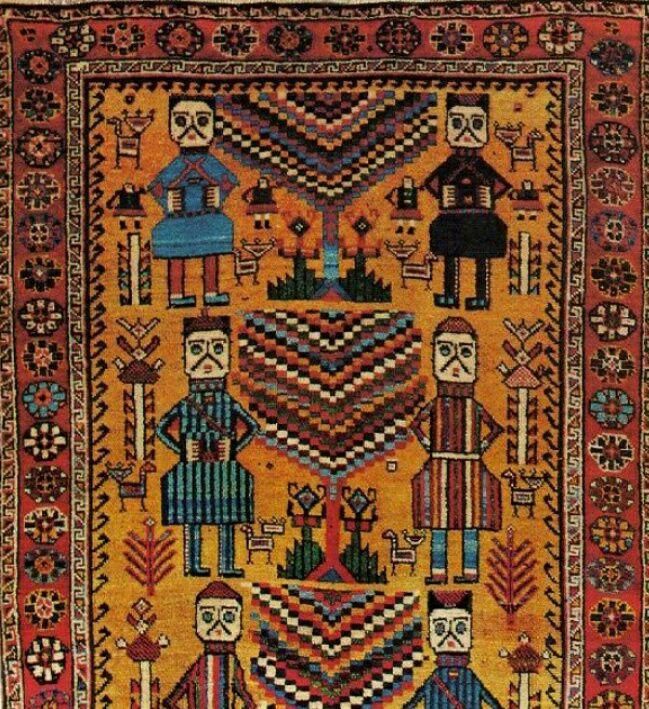
one of the features of Fars carpet is the abundance of geometric shapes in the design of the patterns.
The most common designs in Fars carpet
The theme of the patterns that can be seen in most of the Fars carpets fall into ten groups, each of which have a different frequency and have different fans among people of different regions.
- Bird and head of bird painting
- Plant patterns
- Buteh painting
- Animal patterns (cattle)
- Sun
- Types of flowers
- Stars
- Chess shapes
- Jagged patterns
- Four-array decoration
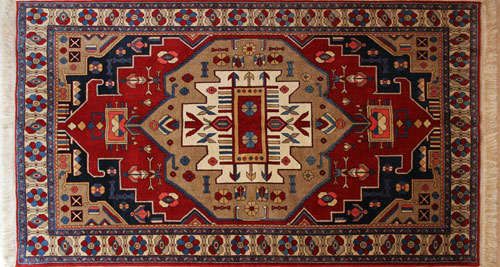
Fars carpets have diverse patterns and has made them different in comparison to other one.
Most Fars carpets are woven by carpet weavers in cities such as Shiraz, Abadeh, Neyriz, and Bulvardi.
The special importance and characteristics of this vast art in this region of Iran led the authorities to seek to record this ancient heritage, reminiscent of their predecessors. This ancient heritage was inscribed on the UNESCO World Heritage List in 2010 in addition to its preservation for all nations, regardless of geographical boundaries; a universal effort must take into account to preserve this heritage.
* Written by Marjan Ghanavati and Translated by Saeed Zaroori.
To read this article in Persian Language click here .
.











Leave a Reply
Want to join the discussion?Feel free to contribute!